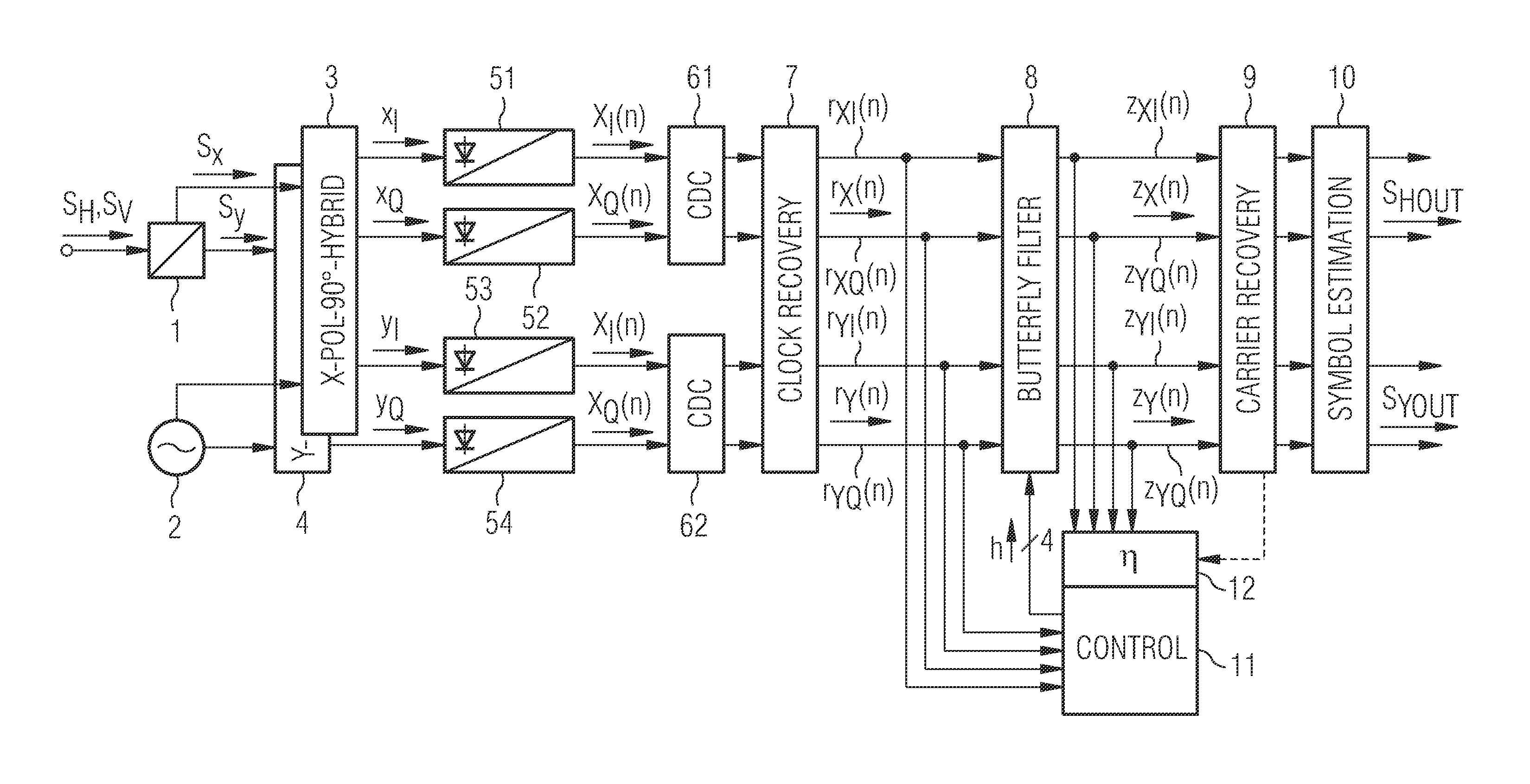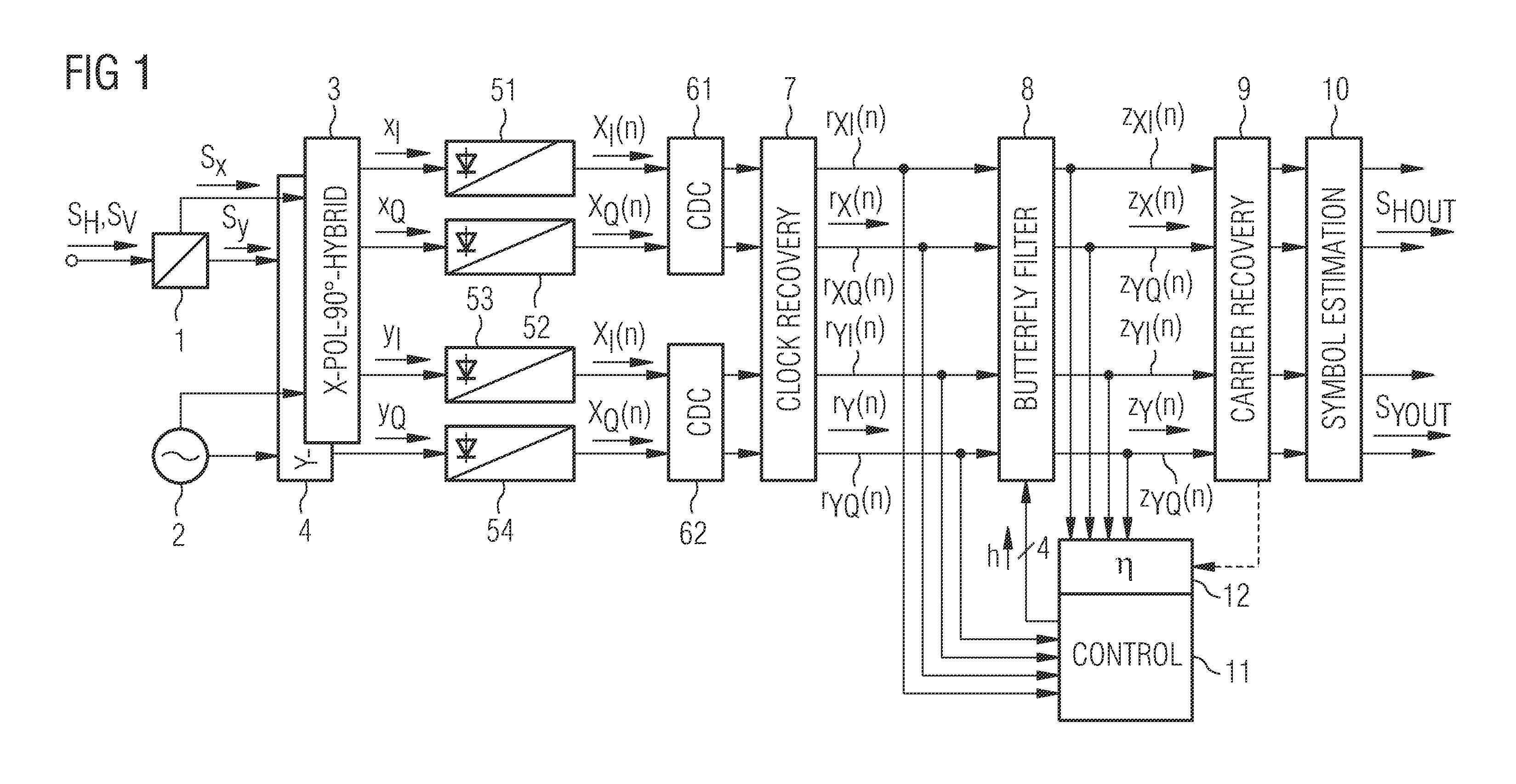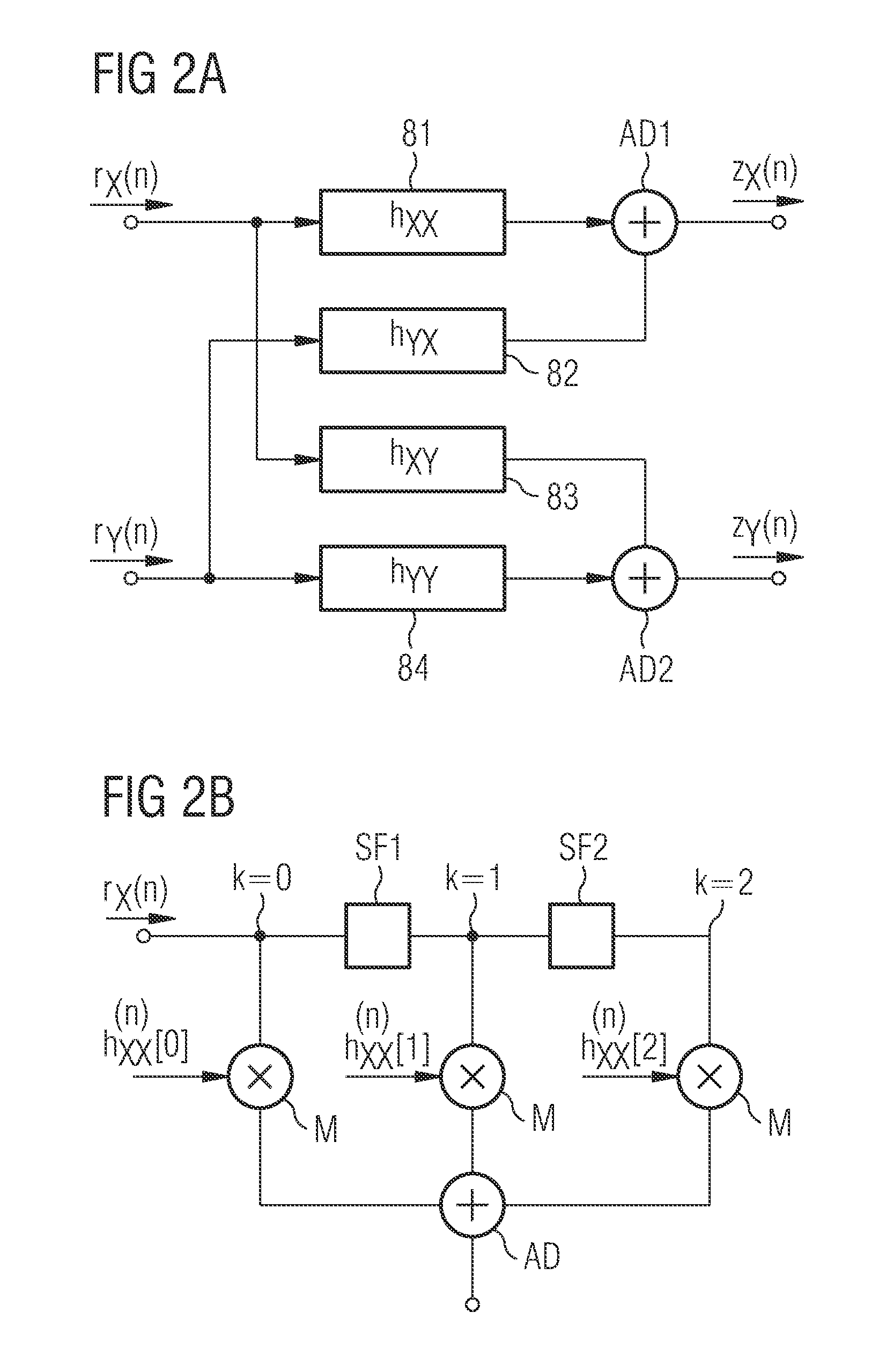Method and arrangement for blind demultiplexing a polarisation diversity multiplex signal
a multi-segment, blind demultiplexing technology, applied in the direction of coding, code conversion, fault response, etc., can solve the problems of complex adaptive optical polarisation controller, complex polarisation control, and inability to manually align the polarisation of transmitter and receiver for fiber links
- Summary
- Abstract
- Description
- Claims
- Application Information
AI Technical Summary
Benefits of technology
Problems solved by technology
Method used
Image
Examples
Embodiment Construction
[0027]An embodiment of the invention will be described as a part of a coherent polarisation diversity multiplex (polmux) receiver. This system transmits two optical signals SH and SV with the same carrier wavelength but orthogonal polarisations in two subchannels of a single-carrier transmission channel.
[0028]FIG. 1 shows a schematic block diagram of a today's polarisation multiplex receiver. The received polmux (polarisation diversity multiplex) signal SH, SV is split by a polarisation beam splitter 1 into an x-component signal SX with x-polarisation and an orthogonal y-component signal SY with y-polarisation. A local oscillator 2 generates a constant wave signal, which is split into two orthogonally polarized constant wave signals and fed together with the orthogonal component signals Sx and Sy to two 90° hybrids 3 and 4, where each x- and y-component signal is split into two orthogonal components xI, xQ and yI, yQ respectively (in-phase component I, quadrature component Q or real...
PUM
 Login to View More
Login to View More Abstract
Description
Claims
Application Information
 Login to View More
Login to View More - R&D
- Intellectual Property
- Life Sciences
- Materials
- Tech Scout
- Unparalleled Data Quality
- Higher Quality Content
- 60% Fewer Hallucinations
Browse by: Latest US Patents, China's latest patents, Technical Efficacy Thesaurus, Application Domain, Technology Topic, Popular Technical Reports.
© 2025 PatSnap. All rights reserved.Legal|Privacy policy|Modern Slavery Act Transparency Statement|Sitemap|About US| Contact US: help@patsnap.com



